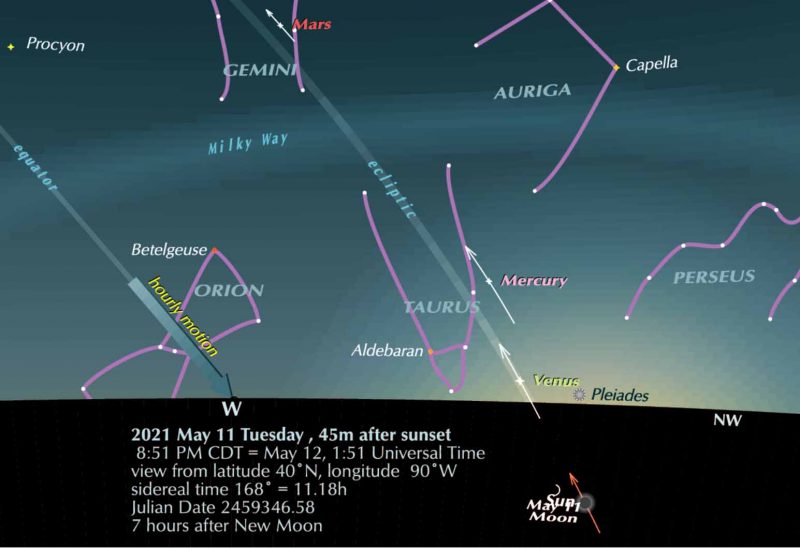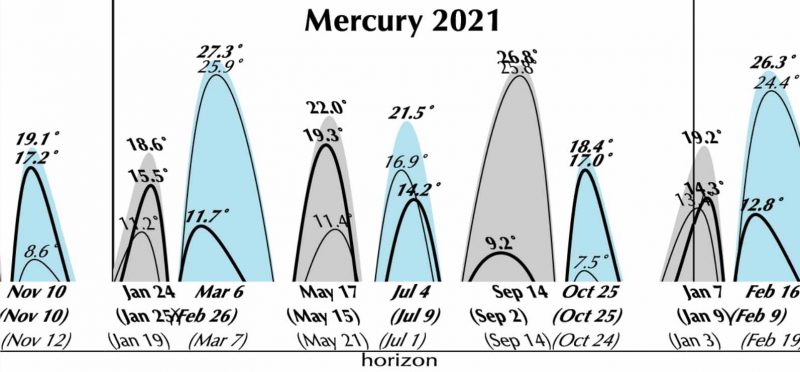
Little Mercury, elusive in the sun’s glare, is becoming more and more findable in the dusk, as it climbs toward its easternmost elongation – its greatest angular distance from the sun in our sky – on May 17, 2021. That will be its highest evening appearance of the year, for our Northern Hemisphere.
This year, Mercury swings three and a half times into the evening sky and three times into the morning sky. The graph below summarizes Mercury’s three morning and three-and-a-half evening appearances of the year.

Meanwhile, in the Blue Planet Department
On the evening of May 9, another small wanderer – as the originally Greek word planet means – a young minke whale, about four yards long, reached an extreme elongation from the sea. That is, se (my pronoun, which I’d rather use than “he or she” or “it”) swam up the river Thames to the farthest point possible: the Richmond lock, which partially stops the tidal river.
At the side of the lock is a line of rollers on which boats can be pulled past. The tide must have been slightly over them, and the whale tried to get through, and became stuck.
This was about 7 a.m. A team from the London fire brigade and the Royal National Lifeboat Institute managed to get hem off the rollers by 1 a.m. Se was towed downriver, but at Isleworth – where we live – se broke free, swam away, and disappeared. Latest we know is that the public is asked to report any sighting of the whale, which is not in good health.
Read more about the whale at Guy Ottewell’s blog, or read about the whale’s fate here.

Bottom line: Two beautiful charts by Guy Ottewell, one showing Mercury’s movement in the western sky at dusk around May 11, 2021, and the other comparing Mercury’s six appearances in our sky this year.











